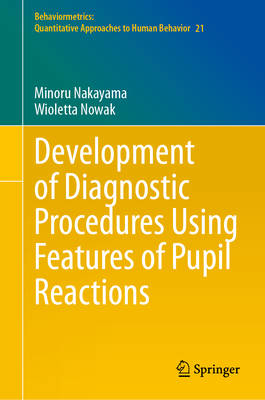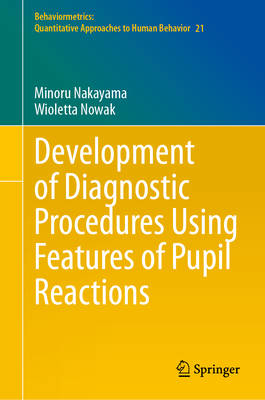
- Afhalen na 1 uur in een winkel met voorraad
- Gratis thuislevering in België vanaf € 30
- Ruim aanbod met 7 miljoen producten
- Afhalen na 1 uur in een winkel met voorraad
- Gratis thuislevering in België vanaf € 30
- Ruim aanbod met 7 miljoen producten
Zoeken
Development of Diagnostic Procedures Using Features of Pupil Reactions
Minoru Nakayama, Wioletta Nowak
€ 198,45
+ 396 punten
Omschrijving
This monograph focuses on the development of diagnostic procedures for diseases related to retinal nerve conditions using features of waveforms of pupillary light reflex (PLR). Eye pupil reflection of light pulses is a well-known phenomenon, but the response mechanism is complicated. Some relationships of the features of chromatic light stimuli and activity of retinal ganglion cells influence the responses. As the features of pupil responses may represent the condition of nerve connections, these waveform shapes can detect symptoms of disease. The assistance of medical clinicians who have shared PLR data from patients of aged-macular degeneration (AMD) or patients with impaired cognitive function, as caused by Alzheimer's disease, for example, is gratefully acknowledged. The recorded temporal data of PLR waveforms were analyzed using multivariate analysis or data science techniques. As most participants were elderly or the number of measurements was insufficient, the signal processing required compensatory techniques. As a result, trials and re-analyses were carried out to better understand certain features. Although the best solutions have not yet been developed, the authors have decided to share the currently available procedures in this monograph and to solicit constructive suggestions for further improvement and development.
Specificaties
Betrokkenen
- Auteur(s):
- Uitgeverij:
Inhoud
- Aantal bladzijden:
- 138
- Taal:
- Engels
- Reeks:
- Reeksnummer:
- nr. 21
Eigenschappen
- Productcode (EAN):
- 9789819545018
- Verschijningsdatum:
- 9/01/2026
- Uitvoering:
- Hardcover
- Formaat:
- Genaaid
- Afmetingen:
- 155 mm x 235 mm

Alleen bij Standaard Boekhandel
+ 396 punten op je klantenkaart van Standaard Boekhandel
Beoordelingen
We publiceren alleen reviews die voldoen aan de voorwaarden voor reviews. Bekijk onze voorwaarden voor reviews.








